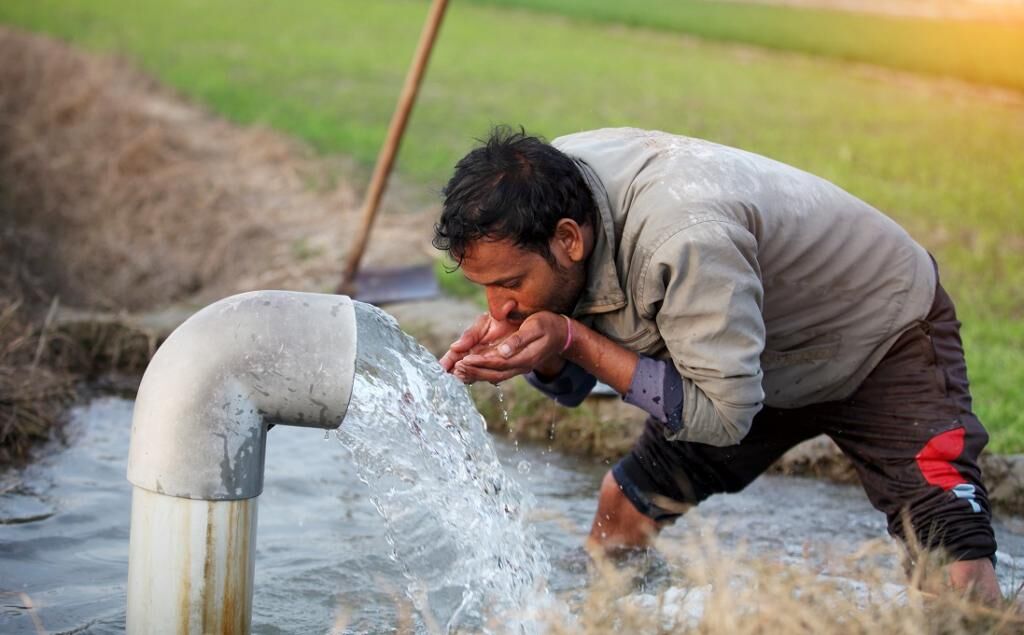Ultimate saviour
Rather than labelling groundwater use as an ‘evil’ there is a need to recognise the potential of automation and technology in achieving sustainability

Groundwater has been a priceless resource for humanity for centuries. Today, technology, with local governance, offers the last chance of saving groundwater even as the world stands at a critical crossroads.
India is the world's largest user of groundwater. The country's economy is tagged to groundwater development in many ways and its inadequacy will jeopardise progress.
Tube wells, bore wells, springs and open-dug wells remain the primary source of groundwater production and abuse in India. Currently, there is a complete mismatch between available resources and the volumes of water withdrawn.
Figures show that the extraction of groundwater in India, now a full-fledged industry in its own right, is on the rise.
Drilling rigs and pumps registered an annual growth of 10-12 per cent. An additional 10 million wells were energised with submersible pumps in the last two decades. Centrifugal pumps in domestic, institutional, commercial and entertainment sectors remain unaccounted for.
Groundwater extraction has to be decoupled from wealth-generation if the excessive demand for groundwater has to be moderated.
Groundwater use need not be made 'evil'. However, failing to distinguish 'need' from 'greed' is criminal.
Use of technology
Integration of technology, ecology and livelihood is critical to the overall sustainability of groundwater. Technology can help in 'decision-making' on economic and social priorities related to groundwater use.
Automated decision-making is one aspect that needs to be adopted as an integral part of groundwater extraction. We need to enable technologies to simulate appropriate human responses.
Technology to automate water extraction systems should be adopted at the earliest. A water extraction system should be completely automated five years after notification.
All existing tube well owners should be required to upgrade to the new technology. All new wells should integrate automation during construction.
Industries, farms, residential complexes, commercial establishments with multiple wells with bulk extraction should implement automation within six months of notification.
Individual households, small farms, schools, public institutions need to be incentivised to adopt automation and conform to water extraction norms.
Smart pumps should form part of automation at the basic well level. Sensors and decision-making tools must be integrated with the pump design to make them intelligent.
Analysis of millions of wells' data in real-time needs to be supported by big-data analytics, cloud computing and real-time modelling with forecasting tools.
The cost of automation to the well owners should not pinch the pocket, ideally matching the basic smartphone price.
Automation advantages
Adopting artificial intelligence (AI) will help make decisions and visualise emerging scenarios for pro-active governance.
For instance, smart sensors in different appliances and Internet of Things (the interconnection via the internet of computing devices embedded in everyday objects, enabling them to send and receive data) shall enable visibility of data of consequence.
Data from millions of nodes (wells) can be analysed simultaneously in a decentralised fashion. Owners can be notified and decisions implemented simultaneously across India.
Data from all nodes shall aggregate at the cloud servers for advanced regional analysis.
Groundwater use through automation, be it for agriculture, industry, commerce, sports, entertainment and domestic use, will be forced to adhere to water footprint norms on daily and annual consumption.
Zettabytes of data traffic flow shall enable daily audit of water balance at the well, watershed, aquifer and river basin scale.
Big data analytics, combined with AI, shall transform governance into a practice of national behaviour for protecting the common property resource under threat.
Technology-guided decision-making would help distinguish groundwater abuse and promote efficient use. Additionally, this would ensure the safekeeping of groundwater within aquifers for posterity.
Way forward
The way forward is to make it mandatory for all energised pumping wells to integrate sensors and decision-making tools to help curb wastage and contamination.
Privately financed wells, pumps, conveyance pipes, storage reservoirs, drips, sprinklers as well as treatment plants installed by millions of ordinary citizens and institutions have already built an efficient decentralised supply chain.
The onus now lies with the investors in safeguarding and protecting such a resource from irrelevance.
Attaching additional technology to the existing investment is the first step in reducing wastage, improving efficiency and self-governance.
Appropriate policy interventions in regulating further constructions and ensuring retention of 50 per cent of the resource within the aquifers can only help in its sustenance.
Groundwater remains the only natural resource that offers free access to all. For the poor, this has ensured economic growth, combined with social mobility. Groundwater cannot be allowed to fail. DTE
Views expressed are personal



